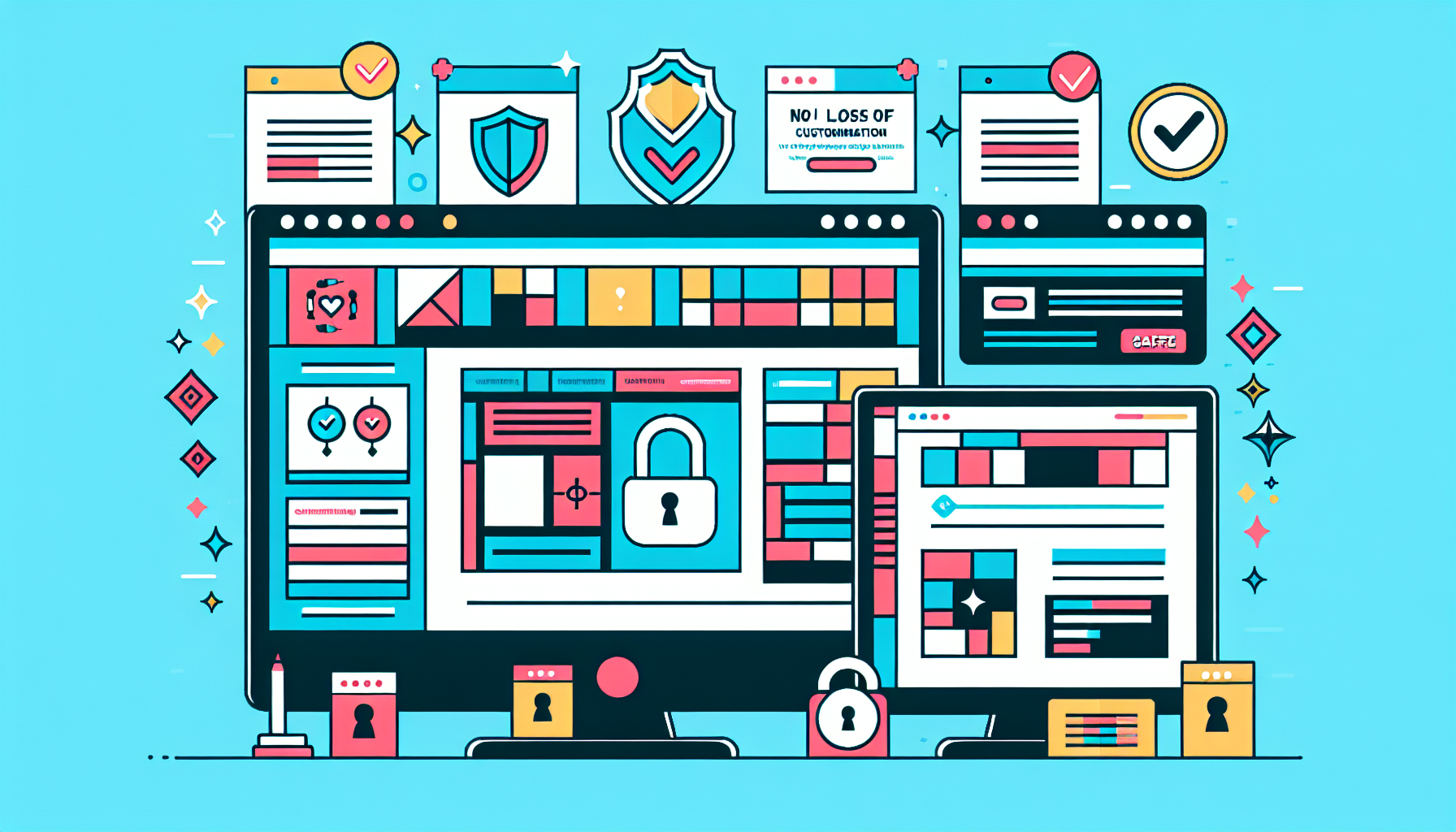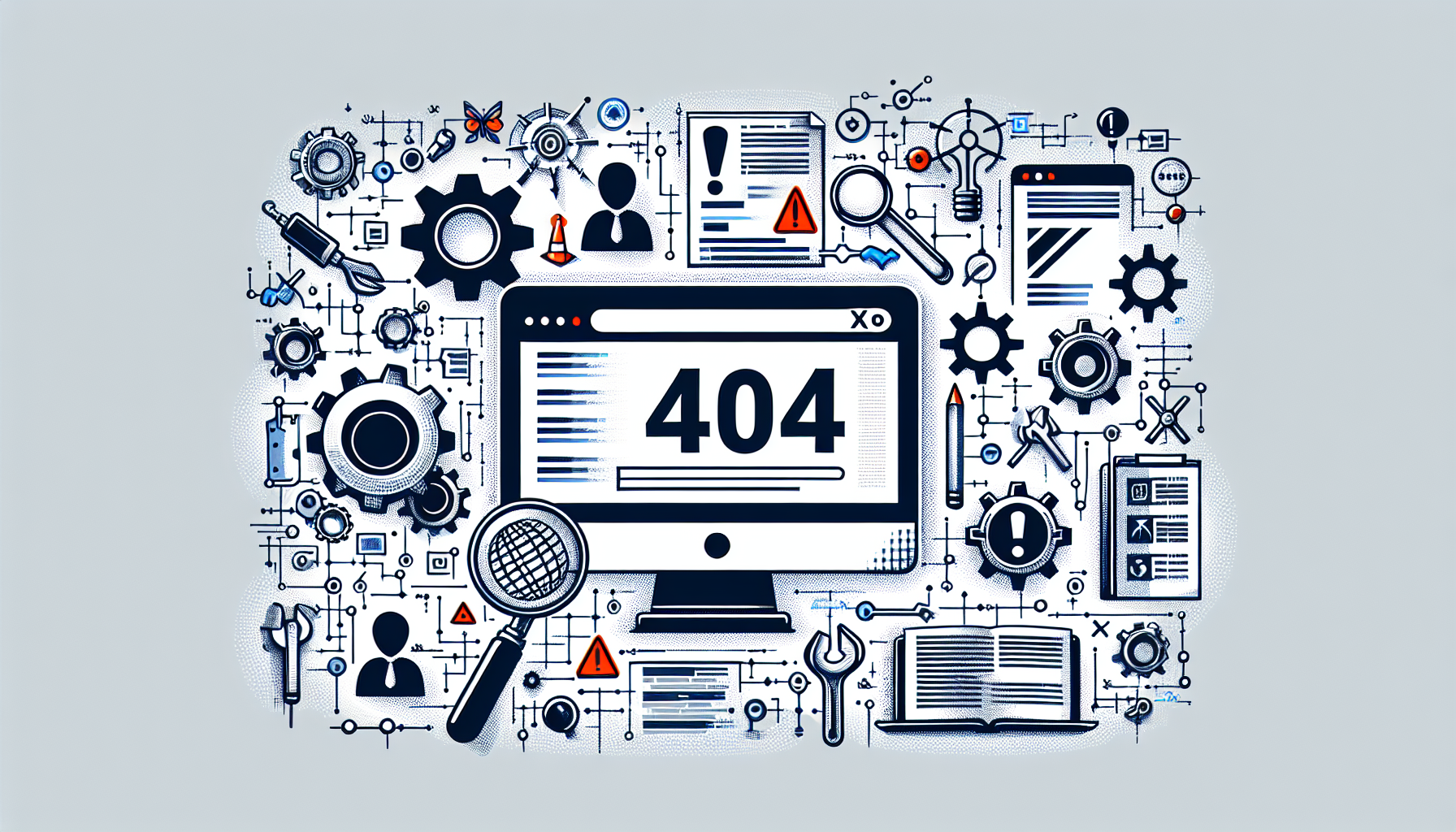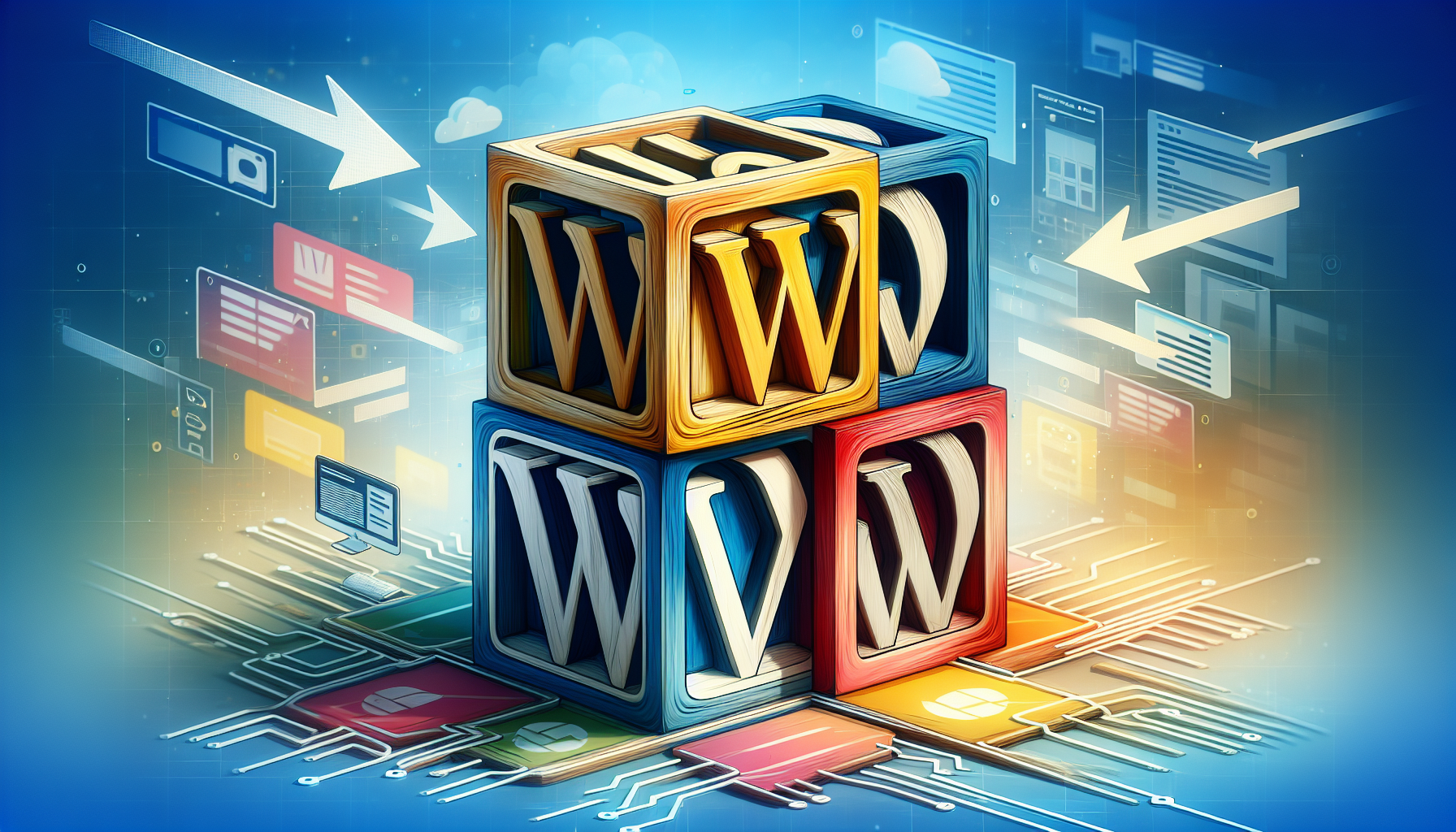How to Safely Update Your WordPress Theme Without Losing Customizations
Published February 22, 2024 at 11:46 pm

Ensuring Theme Continuity: How to Update Your WordPress Theme Safely
Keeping your WordPress theme up-to-date is essential for security, compatibility, and functionality.
It can be a bit tricky when you’ve made customizations that you don’t want to lose.
TLDR: Quick Solution to Safe Theme Updates
// Child Theme Creation for Customizations
// 1. Access your WordPress site via FTP
// 2. Navigate to /wp-content/themes/
// 3. Create a new folder for your child theme, e.g., "twentytwentyone-child"
// 4. Create a style.css file within your child theme folder.
/* Example style.css content */
/*
Theme Name: Twenty Twenty-One Child
Template: twentytwentyone
Author: Your Name
Version: 1.0.0
*/
// 5. Activate the child theme from your WordPress dashboard under Appearance > Themes.
We will delve into why using a child theme matters and how this snippet fits in step by step.
Preserving Customizations: Why Use a Child Theme
A child theme is a WordPress theme that inherits the functionality of another theme, the parent theme.
It allows you to modify and add to the functionality of that parent theme without altering the original files.
Step-by-Step Guide to Update Your WordPress Theme Safely
Updating your WordPress theme without losing your customizations involves the following main steps:
- Create a Backup of Your Website
- Check for Compatibility Issues
- Create a Child Theme
- Review Change Logs and Prepare Customizations
- Update the Parent Theme
- Test Your Website
You should always back up your website before making any updates.
Ensure that the new version of your theme is compatible with your current WordPress version and plugins.
If you haven’t already, set up a child theme to hold your customizations.
Check the theme’s change log for any updates that might affect your customizations and adjust them accordingly.
Update the parent theme via the WordPress dashboard, FTP, or WP-CLI.
After updating, browse your site to ensure everything works as expected.
Each of these steps is critical to avoid losing your tweaks.
Let’s discuss them in detail.
Creating a Full Backup of Your Site
Before you begin, you must back up your website.
This provides a safety net in case anything goes wrong during the update process.
Compatibility: Ensuring a Smooth Transition
Before updating, investigate any compatibility issues with plugins and the core WordPress version.
Your theme’s developer should note any known conflicts or requirements.
Why a Child Theme is Crucial for Customizations
A child theme sits on top of the parent theme, housing all your custom CSS, functions, and template changes.
It keeps them safe when the parent theme is updated, as only the parent theme’s files are replaced.
What to Look for in Change Logs
Change logs provide details on what’s been updated, added, or removed in the new theme version.
Comparing these notes to your customizations can help you prepare for any necessary updates to your child theme.
Executing the Update: Safeguarding Your Site’s Design
When you’re ready to update, you can do so from your WordPress dashboard, which is the most straightforward method.
If you prefer manual methods, FTP or WP-CLI are also options.
Site Testing: Ensuring Everything Works Post-Update
Once you’ve updated, thoroughly test your website on different devices and browsers.
Look for any issues that may have arisen from the update and address them accordingly.
Reapplying Customizations Post-Update
If any customizations were lost and not in a child theme, you’ll need to reimplement them.
Having a backup of your customizations will speed up this process.
FAQs on Updating Your WordPress Theme
How do I create a backup of my WordPress site?
You can use plugins like UpdraftPlus or do it manually through your hosting control panel or FTP.
Can I use a plugin to create a child theme?
Yes, plugins like Child Theme Configurator make it easy to create a child theme.
Will updating my theme affect my SEO?
Not if done correctly. Ensure all SEO data is preserved, especially if you are using a plugin like Yoast SEO.
What if I update and my site breaks?
Revert to your backup. Assess what went wrong, possibly consult with a developer or the theme’s support.
Are there risks to using a child theme?
The only risk is if it’s not set up correctly or if you modify too much, but generally, it’s safe and recommended.
Now, let’s take a deeper look into this process and how you can implement these steps for a successful and safe theme update.
Diving Deeper: Child Themes and Best Practices
Understanding the hierarchy and the way WordPress themes work is essential.
The use of child themes is part of WordPress’s best practices for both safety and efficiency.
What is a Change Log and How to Use It
A change log is a record of all modifications made to the software and is typically included with each new release.
It’s a valuable tool for developers and website owners alike.
Understanding Update Methods: Dashboard, FTP, WP-CLI
Each update method has its pros and cons—some are user-friendly while others offer more control.
It’s important to choose the right method for your skill level and needs.
After the Update: Re-Check Compatibility
Just as you checked for compatibility before the update, it’s critical to do so afterward as well.
Ensure everything is still working harmoniously.
Reimplementing Customizations: Handling Potential Challenges
If any customizations were overridden or removed during the update, you may need to reapply them.
This is where having detailed notes and backups of your changes will prove invaluable.
Ensuring that your WordPress theme update goes smoothly without losing your customizations is a meticulous process, but with the right steps and precautions, it’s absolutely achievable. Following best practices, like using child themes and thorough testing, can save you a lot of headaches down the line. Remember, regular updates are essential for the health and security of your website, and being proactive about it puts you in the best position to maintain a functional, up-to-date online presence.
Evaluating the Need for Theme Updates: When and Why to Do It
Regular updates are the lifeblood of a WordPress website, ensuring security and functionality keep pace with the latest standards.
Benefits of Timely WordPress Theme Updates
Updated themes can improve your website’s performance and provide new features or design improvements.
Understanding Your WordPress Environment Before Updating
Know your theme’s version, current WordPress version, and the PHP version your host uses to anticipate any issues.
Backup Solutions: Picking the Right Tool
Choosing a reliable backup plugin or service is crucial for safeguarding your website’s data.
How to Handle Pre-Update Checks Effectively
Performing theme and plugin compatibility checks before updating can save you from future headaches.
Using Staging Environments for Safe Updates
Testing updates in a staging environment can prevent any disruption on your live site.
Child Theme Development Best Practices
Maintaining clear documentation for your child theme’s customizations aids future development and updates.
Change Logs: Understanding the Developer’s Notes
Interpreting a change log correctly can help you understand the impact of the update on your site.
Managing Update Notifications: A Proactive Approach
Regularly checking for update notifications can help keep your site secure and running smoothly.
Using Version Control for Theme Customizations
Implementing version control for your customizations offers a safety net if updates don’t go as planned.
Best Tools for Comparing Files and Syncing Changes
Tools like Diffchecker or version control systems can be invaluable for syncing and tracking changes.
Maintaining a Log of Your Site Customizations
A detailed customization log can serve as a quick reference for what need to be reapplied post-update.
Migrating Customizations: Avoiding Overwrites
Understanding which files are affected by theme updates helps prevent overwriting your customizations.
Insights From the WordPress Community: Leveraging Forums
Engaging with the WordPress community can provide additional support and insights into managing updates.
Customization Hygiene: Clean Code Practices
Writing clean and well-documented code in your child theme ensures easier updates and maintenance.
Exploring Alternative Update Methods: When to Avoid Auto-updates
In certain scenarios, manual updates might be more suitable than auto-updates to maintain control over the process.
Dealing With Post-Update Issues: Steps to Rectify Problems
If an update causes issues, having protocols in place on how to deal with them is essential for quick recovery.
Advanced Customizations: Child Themes vs Plugin Overrides
Deciding whether to use child themes or plugin overrides for customizations can influence your update strategy.
Understanding the Role of Parent Theme Vendors in Update Processes
Knowing the level of support and the update frequency provided by your theme’s developer is important for planning.
Ways to Stay Informed on Theme Update Releases
Subscribing to theme developers’ newsletters and social media can keep you updated on release schedules.
Documentation: Your Best Friend for Post-Update Troubleshooting
Well-organized documentation can be a lifesaver when you encounter issues after updating your WordPress theme.
Revisiting Site Performance After Theme Update
Reevaluate your site’s performance metrics after an update to confirm the enhancements or to troubleshoot regressions.
FAQs on Updating Your WordPress Theme
How can I ensure my widgets remain intact after a theme update?
Widgets should remain intact, but it’s wise to document their setup before updates as an extra precaution.
Should I update all my plugins at the same time as my theme?
It’s generally recommended to update plugins one at a time to isolate issues, but always check compatibility first.
Can automated update services help manage the process?
Services like WP Buffs can help you manage updates, but it’s important to vet any service and understand what’s included.
How do theme updates interact with page builders?
Ensure that the page builder plugin is compatible with the new theme version to prevent design issues or content loss.
In sum, updating your WordPress theme while retaining your customizations requires careful planning, a robust backup strategy, utilizing child themes for customizations, and methodical testing. Staying informed and prepared for each step of the process ensures that you can enhance your website with the latest features and security updates while preserving your personalizations. Adopting these approaches will help make your WordPress maintenance a routine rather than a challenge.
Shop more on Amazon


